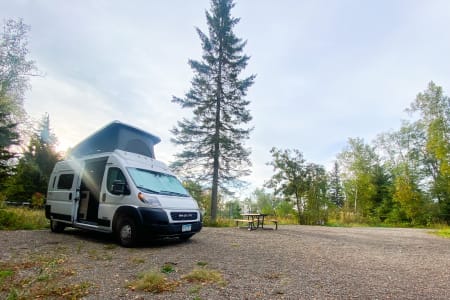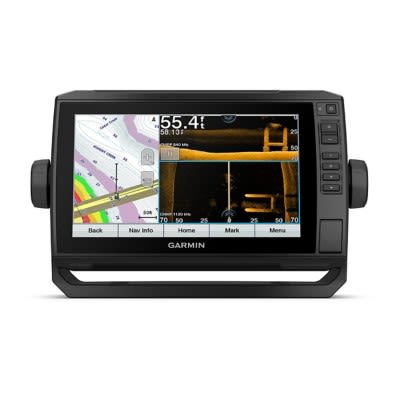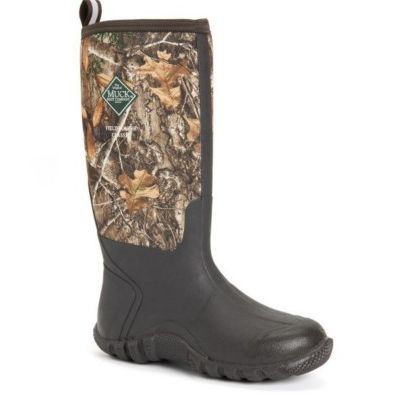Today's Best Fishing Times
Get the best fishing times for St. James Lake with Lake-Link's Fishing Forecast. SEE MORE

Share your catch!
We want to see what you've caught on St. James Lake.Frequently Asked Questions About St. James Lake, MN
- How big is St. James Lake?
- How deep is St. James Lake?
- What kind of fish can you catch in St. James Lake?
- What are the closest cities to St. James Lake?
- Are there places to stay in the St. James Lake area?
- Are there boat launches on St. James Lake?
- Are there places to eat and drink near St. James Lake?
- What is the average air temp for St. James Lake?
- Are there any state parks near St. James Lake?
How big is St. James Lake?
How deep is St. James Lake?
What kind of fish can you catch in St. James Lake?
Other fish species in the lake include Green Sunfish, Hybrid Sunfish, Orangespotted Sunfish and White Sucker.
What are the closest cities to St. James Lake?
Are there places to stay in the St. James Lake area?
More Lodging Options
Are there boat launches on St. James Lake?
Are there places to eat and drink near St. James Lake?
Explore the St. James Lake area in a RV
Are you looking for an adventurous vacation option that won't break the bank? Look no further than renting an RV! Contrary to popular belief, the process is much simpler than you might imagine. With just a few easy steps, you'll soon be experiencing the ultimate freedom and convenience of exploring the open road in your very own recreational vehicle. And the best part? RV travel can save you up to 60% compared to other types of vacations! With the money you'll save, you'll be able to travel even more and create unforgettable memories along the way. So why wait? Start planning your next adventure today with an RV rental. Learn more about renting a RV.


2020 Lightning Aluminum Enclosed 5-place Snowmobile Trailer
Lakeville, MN


History & Status of the Fishery
INTRODUCTION
St. James Lake is a 252-acre lake located in the City of St. James in Watonwan County. St. James Lake has a maximum depth of 15.4 ft. Historically, St. James Lake was characterized as having good water quality and abundant aquatic vegetation. Suspected partial winterkills in the mid-1990's suppressed gamefish populations enough that rough fish populations were able to become well established, thereby negatively affecting the water quality and the aquatic vegetation community in St. James Lake. In 2001, a rotenone reclamation was done on St. James Lake to eliminate rough fish populations and reestablish game fish populations. Following the reclamation in the spring of 2002, water clarity improved and aquatic vegetation was able to reestablish, providing excellent habitat for desirable fish species. Installation of an additional aeration unit has helped to prevent winterkill in recent years, which has aided in stabilizing game fish populations. St. James Lake is managed primarily for Largemouth Bass and Bluegill, and secondarily for Walleye, Northern Pike, Black Crappie, and Yellow Perch. Walleye fingerlings are stocked every other year (2011, 2013, 2015, 2017) at a rate of 2 pounds per acre. The remaining management species have not been regularly stocked following the reclamation because they have maintained themselves through natural reproduction. A standard survey was conducted the week of August 3, 2015 to monitor fish populations using two gill nets and nine trap nets. Largemouth Bass were electrofished the week of May 21, 2015 to monitor their population.
LARGEMOUTH BASS
In years following the reclamation, Largemouth Bass catch rates have varied from 9.0 per hour in 2011 to 394.0 per hour in 2003, and have averaged 110.4 per hour since 2003. In 2015, Largemouth Bass were captured at a rate of 27.0 per hour, which is within the desired range of 20-30 per hour, and is an increase from 18.4 per hour observed in 2013. Largemouth Bass lengths ranged from 4.0 to 18.5 inches and averaged 12.8 inches. During electrofishing in 2015, decent numbers of 4.0 to 6.5 inch bass were sampled suggesting that natural reproduction occurred in 2014. Largemouth Bass were plump, suggesting that they are finding plenty of food. Although not highly abundant, a fishable population of Largemouth Bass exists, with good numbers exceeding 17.0 inches.
BLUEGILL
The 2015 Bluegill catch rate was 15.6 per trap net, up from 1.3 per trap net in 2013, and the highest Bluegill catch rate since the 2007 survey. Since 1986, Bluegill catch rates have averaged 28.2 per trap net, and have ranged from 1.3 per trap net in 2013 to 101.9 per trap net in 2003. The 2015 catch rate was within the expected range of catch rates for similar lakes (1.9 to 29.5 per trap net). Lengths of Bluegill ranged from 3.2 to 8.6 inches and averaged 6.9 inches. Bluegill were plump, indicating that there is plenty of food available. Multiple year classes of Bluegill are present, suggesting that natural reproduction occurs in St. James Lake. The Bluegill population is relatively balanced; however, Bluegill larger than 9 inches are lacking, which could be a result of angler harvest.
NORTHERN PIKE
Since the all-time high catch rate of 31.3 Northern Pike per gill net in 2011, the catch rate declined to 26.0 per gill net in 2013 and to 21.0 per gill net in 2015, continuing to be much greater than expected catch rates for this area (0.1 to 3.0 per gill net). Prior to the increase in Northern Pike abundance in 2011, catch rates were typically less than 2.3 per gill net. The extreme increase in abundance was the result of a strong naturally reproduced year class in 2010. Northern Pike were 12.7 to 29.2 inches and averaged 20.8 inches. Relative weight differed between size categories of Northern Pike. Northern Pike greater than 21.0 inches were skinny, indicating that they are not foraging successfully and may be stunted. Anglers should not be afraid to harvest northern pike on St. James Lake, as plenty are available, and thinning them out may result in better growth of remaining Pike.
WALLEYE
Walleye catch rates on St. James Lake have varied from 0.5 per gill net in 1986 to 13.3 per gill net in 2007 and have averaged 4.2 per gill net since 1986. The 2015 catch rate of 4.5 per gill net increased slightly from the 2013 catch rate of 4.0 and was within the expected range of catch rates for similar lakes in the area (2.0 to 13.3 per gill net). Walleye lengths ranged from 15.3 to 18.4 inches and averaged 16.6 inches. The Walleye population in St. James Lake is dependent upon stocking as natural reproduction likely does not occur. Growth of Walleye is fast in St. James Lake, as they were 17.0 inches by age-3. The abundant Northern Pike population may be limiting the success of Walleye fingerling stockings, as fingerlings are likely vulnerable to predation by Northern Pike. Walleye yearlings, which are typically larger than fingerlings, were stocked in 2015, and may be less vulnerable to predation because of their larger size. A fishable population of Walleye is present, and if angler hooks into one, it should be a decent size.
YELLOW PERCH
In 2015, Yellow Perch were captured at a rate of 8.5 per gill net, up slightly from 7.0 per gill net in 2013, but much lower than the catch rate of 67.3 per gill net observed in 2011. The 2015 catch rate was within the expected range of catch rates for similar lakes in the area (3.0 to 67.3 per gill net). Yellow Perch were small, ranging from 6.0 to 7.9 inches and averaging 6.8 inches. The Yellow Perch population is likely being controlled by the abundant Northern Pike population, as well as Walleye and Largemouth Bass populations. Additionally, an increase in the Bluegill population may be creating competition between the two species.
BLACK CRAPPIE
From 2009 to 2013, Black Crappie abundance was less than 1.0 per trap net. The catch rate increased to 4.2 per trap net in 2015, which is the highest catch rate observed since 2007 (10.7 per trap net), and is within the expected range of catch rates for similar lakes (1.0 to 18.8 per trap net). Black Crappie were small, ranging from 4.4 to 9.0 inches and averaging 6.9 inches. It appears that the Black Crappie population in St. James Lake is mainly comprised of one abundant year class, with a few more year classes present in low numbers, which is typical of crappie populations. Black Crappie should be a harvestable size within the next couple of years.
OTHER SPECIES
Black Bullhead were sampled at a rate of 92.5 per gill net in 2015, slightly exceeding the expected range of catch rates for similar lakes (9.6 to 91.4 per gill net). The 2015 catch rate was the highest catch rate since the reclamation in 2001, as catch rates since 2003 have not exceeded 2.7 per gill net. The trap net catch rate remained relatively low at 1.2 per trap net, but was also the highest catch rate since the reclamation. Black Bullhead were 4.8 to 10.7 inches and averaged 7.0 inches. With a wide range of lengths present, it appears that Black Bullheads have successfully reestablished their population.
Although not captured during August netting, Common Carp were observed while electrofishing in May 2015, which marks the first time that they have been sampled in St. James Lake since the reclamation in 2001.
Plants in the water and at the water's edge provide habitat, prevent erosion, and absorb excess nutrients. Shrubs, trees, and woody debris such as fallen trees or limbs provide good habitat both above and below the water and should be left in place. By leaving a buffer strip of natural vegetation along the shoreline, property owners can reduce erosion, help maintain or improve water quality, and provide habitat and travel corridors for wildlife.
Best management practices within the watershed (no-till farming, cover crops, buffer strips, targeted fertilizer application, reduced or metered tiling) would help reduce nutrients entering the lake. High nutrient and sediment input can cause algae blooms and reduce overall water quality. Any improvements in the watershed are likely to have positive impacts on the fishery.
Prepared by Jonah Dagel
What is the average air temp for St. James Lake?
Are there any state parks near St. James Lake?
For more Minnesota State Park information see our State Park Guide.
St. James Lake Reviews
Below is the word on street about St. James Lake.Have you been to St. James Lake? Why not share your personal reveiw with others?
Submit Review
thomas h.

More Nearby Lakes To Explore
There's more lake's to explore around St. James Lake...| DISTANCE | ACRES | MAX DEPTH | |
| Kansas Lake | 4.7 mi | 403 | 7 ft |
| Long Lake | 4.9 mi | 263 | 13 ft |
| Butterfield Lake | 8.2 mi | 54 | 10 ft |
| Fish Lake | 10.7 mi | 156 | 5 ft |
| Wood Lake | 11.0 mi | 559 | 4.3 ft |
| Hanska Lake | 11.5 mi | 1,795 | 16 ft |
| Cedar Lake | 14.0 mi | 707 | 7 ft |
| Perch Lake | 14.9 mi | 174 | 5 ft |
| Fedji Lake | 14.9 mi | 172 | 6 ft |
| Mountain Lake | 15.1 mi | 220 | 8 ft |


 (1)
(1)














